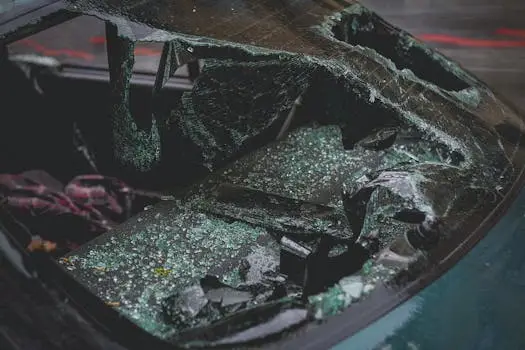If you’ve been involved in an accident where the at-fault driver lacks auto insurance, you’re not alone. Many drivers are left wondering what to do next. Knowing the legal steps after a car crash with an uninsured driver is essential in 2025. With proper action, you can still seek compensation, avoid costly mistakes, and protect your financial interests—even when the other party is uninsured.
Why Are Uninsured Drivers a Growing Problem?
Despite mandatory insurance laws in most U.S. states, millions still drive without valid coverage. According to the Insurance Research Council, around 12.6% of U.S. drivers are uninsured, with even higher rates in states like Florida and Mississippi. This leaves responsible drivers vulnerable when accidents occur, especially if they lack the right type of coverage.
First Legal Steps to Take After a Crash With an Uninsured Driver
1. Contact the Police
- Call local law enforcement immediately after the accident.
- Ensure a police report is filed documenting the scene and confirming that the other driver is uninsured.
- Request a copy of the report for your insurance claim and legal records.
2. Gather Essential Evidence
- Take clear photos of vehicle damage, injuries, road signs, and license plates.
- Get contact details of the uninsured driver and any witnesses.
- Write down the time, location, weather conditions, and sequence of events.
A detailed record strengthens your insurance claim and potential legal case.
3. Get Medical Attention
- Visit a hospital or urgent care facility immediately.
- Keep a complete record of medical visits, prescriptions, diagnoses, and treatment plans.
- Request copies of all documentation for insurance and legal use.
4. Notify Your Insurance Provider
- Contact your insurer within 24 to 48 hours.
- Inform them the at-fault driver had no insurance.
- Share the police report, photos, and medical records.
Avoid giving detailed statements without consulting an attorney first.
Insurance Options for Recovering Compensation
Even if the other driver is uninsured, you may still be protected depending on your insurance policy.
Use of Coverage Options
| Coverage Type | What It Covers | Deductible |
|---|---|---|
| Uninsured Motorist (UM) | Medical bills, lost wages, pain and suffering | Yes |
| Collision Coverage | Damage to your vehicle | Yes |
| Medical Payments (MedPay) | Immediate medical expenses | Sometimes |
| Personal Injury Protection | Medical bills, lost wages, other costs | Sometimes |
Your ability to file a claim under these policies will depend on your state laws and policy limits.
Many drivers are unaware that UM/UIM coverage is optional in some states but provides essential protection.
Can You Sue an Uninsured Driver?
Yes, you can file a lawsuit against an uninsured at-fault driver. However, you need to consider the driver’s ability to pay.
What Legal Action Can Achieve:
- Court-ordered damages
- Wage garnishment (depending on state laws)
- Property liens
Risks to consider:
- Many uninsured drivers are judgment-proof, meaning they have little to no assets.
- Legal costs may outweigh recovery unless significant damages exist.
🔗 See how legal protection insurance can cover lawsuit expenses
Know Your State Laws About UM Coverage
UM and UIM (Underinsured Motorist) coverage regulations vary by state. Here’s a snapshot:
| State | UM Coverage Required? | Notes |
|---|---|---|
| Texas | Optional (must decline in writing) | Highly recommended by legal experts |
| California | Optional | Must be offered with every new policy |
| Florida | Optional | No-fault state; PIP required instead |
| New York | Required | Covers injuries only, not property damage |
| Illinois | Required | Mandatory for bodily injury liability |
What Not to Do After an Accident With an Uninsured Driver
- Do not accept cash offers at the scene.
- Do not admit fault or speculate about the cause.
- Do not post accident details on social media.
- Do not delay seeking medical care.
- Do not wait too long to file a claim—your legal right to recover damages may expire.
How to Protect Yourself Going Forward
If you don’t already have uninsured motorist coverage, now is the time to add it.
Steps to Reduce Future Risk:
- Review and update your auto policy with adequate UM/UIM limits.
- Include collision coverage to handle property damage claims regardless of fault.
- Consider adding legal protection insurance to cover legal expenses in civil suits.
You can learn more about legal expense insurance options at AssuredPolicy.com.
Common Scenarios and Insurance Outcomes
| Scenario | Your Coverage Needed | Likely Outcome |
|---|---|---|
| Hit by an uninsured driver | UM coverage | Covered for injuries and lost wages |
| Vehicle damage, uninsured at fault | Collision coverage | Repair costs covered minus deductible |
| Medical bills from accident | MedPay or PIP | Immediate expenses reimbursed |
| No UM or collision coverage | Lawsuit | Risky; possible low recovery |
Internal Resource
Visit our dedicated page for guidance on legal protection insurance in the U.S., and learn how to shield yourself from out-of-pocket legal expenses in cases like this.
Trusted External Resources
- National Highway Traffic Safety Administration (NHTSA)
- Insurance Information Institute (III) – Auto Insurance Guide
- USA.gov – How to Sue Someone in Small Claims
Frequently Asked Questions
Can I file a claim if the other driver has no insurance?
Yes, you can file under your UM coverage, if available. If not, you may need to pursue the individual in court or rely on your own collision and medical coverage.
Is it worth suing an uninsured driver?
It depends on the driver’s financial situation. If they have assets or income, you may recover damages. Speak with an attorney to assess viability.
Will my premiums increase if I use UM coverage?
Possibly. While not as severe as an at-fault claim, your insurer may raise premiums after a payout. Review your policy details.
How long do I have to take legal action?
Most states have a 2 to 3-year statute of limitations, but you should act promptly to preserve your legal rights.
What if I didn’t buy UM coverage?
Without UM coverage, you may have limited options. Rely on collision insurance, health coverage, or consider filing a civil lawsuit.
Final Thoughts
Dealing with a car crash is stressful enough—but when the other driver is uninsured, things get even more complicated. By following these legal steps after a car crash with an uninsured driver, you can protect your interests, seek proper compensation, and minimize the financial impact.
Act quickly, collect strong documentation, and don’t hesitate to speak with a qualified attorney. Your ability to recover damages depends on how well you navigate the legal and insurance process.




uukz76